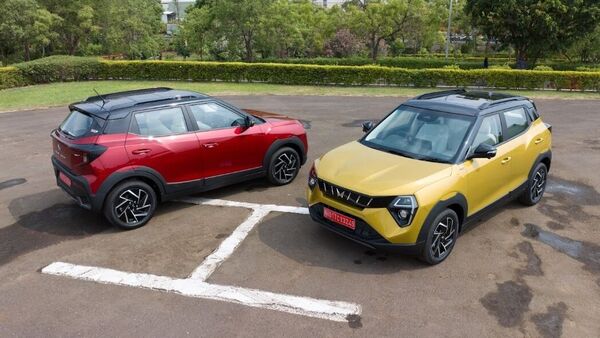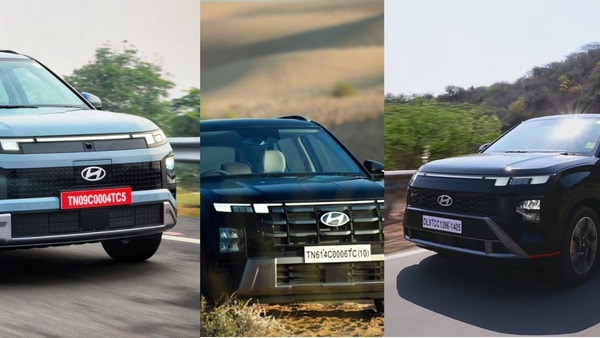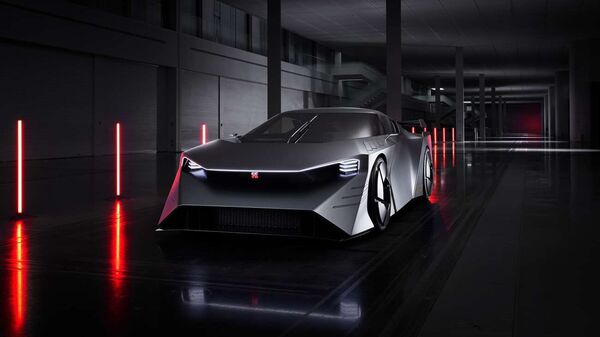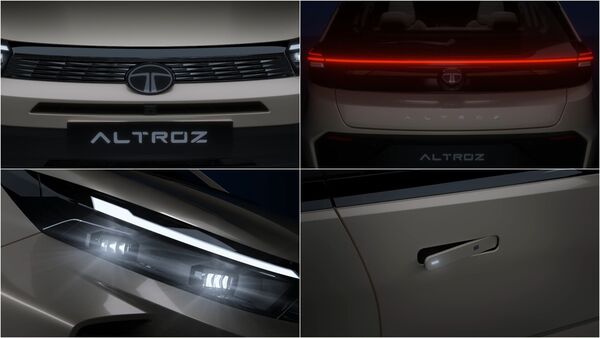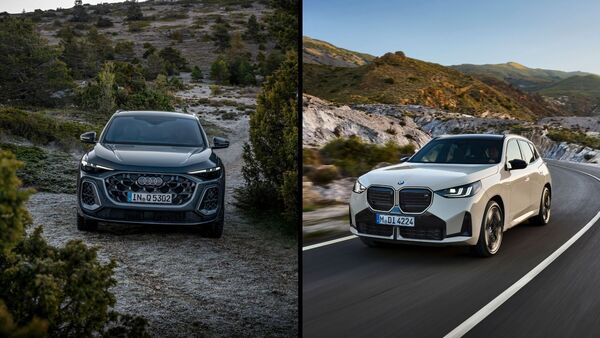
Audi Q5 vs BMW X3: Which one should you buy?
8 months ago | 76 Views
The new Audi Q5 gets a rejigged exterior design that brings a more aggressive front-end look to the SUV. While the upper singleframe grille has reduced in width, it is contrasted with a bigger lower grille that is broader than before. This stretches across and connects with the larger air curtains on either side of the singleframe. The new matrix LED headlamps are thinner and sit farther back into the bonnet of the car, and the new LED DRLs sit right on top of them with eight customisable lighting profiles. The rear end receives second-generation OLED tail lights which horizontally stretch across the trunk lid. These lights are able to display graphics to warn other drivers of accidents ahead.
The BMW X3 brings together a more muted approach to building presence with a compact, but angular kidney grille that does not take up as much real estate as its rival. The grille has been modernised with a new internal structure and it can light up with a white glow. The X3 can be fitted with new adaptive LED headlamps with cornering functionality and blue design accents. The headlamps get sharper with two L-shaped overlapping elements and seemingly touch the kidney grille. The L-shaped motif for the headlamps are also seen being used in the design of the thin vertical air curtains. The car features bolder side skirts and the rear end gets T-shaped tail lamps that incorporate the rear indicators.
Audi has fitted in a curved panoramic display that houses the 11.9-inch driver’s instrument cluster and the 14.5-inch MMI infotainment display. The display is powered by Android Automotive OS and features built-in applications which do not require a smartphone to use. The car further features a 16-speaker Bang & Olufsen sound system with Vehicle Noise Compensation. The Q5 features an optional Heads-up display that is configurable through a selector button on the steering wheel and this allows the driver to control vehicle functions and the infotainment through HUD. The car can be fixed with a 10.9-inch passenger-exclusive infotainment display as an optional add-on.
The BMW X3 gets a curved panoramic display that houses both the infotainment display and the driver’s instrument cluster, and this setup runs on BMW Operating System 9. The cabin features ambient interior lighting that can be configured through three My Modes options – Personal, Sport, and Efficient. Depending on the mode selected, the vehicle’s functions, displayed content, and lighting all sync up. BMW further offers a subscription-based BMW Digital Premium that enhances the navigation experience, as well as broadening the scope of the integrated voice assistant.
The Audi Q5 is fitted with diamond-quilted seats and the interior upholstery can be done with materials such as Kaskade or Dinamica fabric, the latter of which is partly made with recycled materials. The Q5 takes on a ‘Material Driven Design’ with soft wrap elements that stretches around the cabin and fabric panels on the armrests and in the door. Second row passengers get two USB charging ports, rear AC vents, and the cabin features a panoramic sliding sunroof. The second-row further features fully-adjustable rear seats, enhancing the level of passenger comfort.
The BMW X3 is offered with new electronically-adjustable heated and ventilated sport seats in the front, and the cabin can be upholstered in the customer’s choice between three options. The dashboard can be wrapped in fabric made from recycled polyester as an optional add-on. The interior is fitted with light strips that form U-shaped designs around the cabin and can display contrasting colours. Since the X3’s infotainment runs on the latest iDrive 9 operating software, there are fewer physical controls for the interior and the driver has to rely mostly on the voice assistant.
The new Q5 SUV is based on the same platform that lies underneath all new A5 models and it comes with three mild-hybrid options. There is an entry-level 2.0-litre engine that makes 201 bhp and 345 Nm of torque. With the diesel motor, the power output stays the same while the torque is rated for 400 Nm. The top-of-the-line SQ5 model receives the third unit that makes 362 bhp and 550 Nm of torque. The mild-hybrid motor in the Q5 consists of a 48V hybrid system that aids the combustion engine and provides additional torque drive of up to 230 Nm and a 24 bhp power boost. The engine is paired with a seven-speed dual-clutch transmission that delivers power to all four wheels.
The BMW X3 is offered with two engine variants across two variants, and similar to its counterpart, all options are assisted with a 48V mild-hybrid system. The 2.0-litre turbocharged four-cylinder petrol engine in the 30 xDrive variant makes 255 bhp and 400 Nm of torque, and this can go from 0-100 kmph in six seconds. The 3.0-litre six-cylinder option is offered with the M50 xDrive variant and this makes 393 bhp and 580 Nm of torque. Both power units are paired with an eight-speed automatic transmission that delivers power to all four wheels.
The Q5 features a host of driver assistance features that includes rear parking aid with distance display, cruise control, lane driving aids, and an attention and drowsiness assistant. The Q5’s ADAS functions include emergency braking, Evasion Assist, Turn Assist, and Front Cross Traffic Assist. Other features include traffic sign-based cruise control, and Park Assist Plus.
The X3 comes with an optional Driving Assistant Professional Package that includes Lane Keeping Assistant with Side Collision Protection, Active Blind Spot Detection and Distance Control. The car further has a Traffic Jam Assistant that allows for handsfree driving at lower speeds of up to 60 kmph. BMW has fitted in Parking Assistant as standard with a Backup Assistant and rearview camera.
Read Also: Kinetic Green to launch a family electric scooter within 18 months
#

